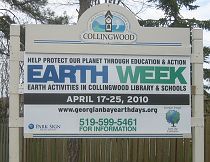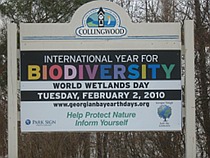Alliance of World Scientists Issue Bleak Warning
In 1972 the first United Nations Conference dedicated to the state of Nature took place in Stockholm. It spoke of the fragility of the planet’s ecosystems and helped spur the expanding interest in conservation. The UN Environment Programme was created in the same year to promote sustainability and stewardship for the Earth.
Seven years later, amidst growing concern about greenhouse-gas emissions, the First World Climate Conference was held in Geneva. This event was important because it laid out the internationally recognized concerns about climate change. Its Declaration stated: “Having regard to the all-pervading influence of climate on human society and on many fields of human activities and endeavour, the Conference finds that it is now urgently necessary for the nations of the world: (a) To take full advantage of man’s [sic] present knowledge of climate; (b) To take steps to improve significantly that knowledge; (c) To foresee and prevent potential man-made [sic] changes in climate that might be adverse to the well-being of humanity.”
Over the next nine years there were further gatherings of scientists and governments, culminating in the establishment of the Intergovernmental Panel on Climate Change.
tinyurl.com/history-climate-activities
Forty years after the Stockholm Conference, the Alliance of World Scientists (AWS) came together to issue a warning to the people of the world to take action. They expressed their concern in a preliminary paragraph: “Scientists have a moral obligation to clearly warn humanity of any catastrophic threat and to ‘tell it like it is.’ On the basis of this obligation and the graphical indicators presented below, we declare, with more than 11,000 scientist signatories from around the world, clearly and unequivocally that planet Earth is facing a climate emergency.”
tinyurl.com/aws-warning
It is some of those graphical indicators that I wish to share with you. They are important because they speak about more, much more, than just atmospheric change, which until now has received most of the attention. The graphs are divided into two groups: the first sets out the human activities that have changed our climate, and the second focuses on the impacts of those activities.
A human population graph begins the first list. In 1979 there were 4.4 billion people on Earth, and now there are almost 7.8 billion, spelling out massive hurdles for our planet’s ability to sustain life as we know it if we continue on this trajectory. Total fertility rate has dropped considerably since 1979 but is beginning to rise again. More than 220,000 babies are born each day – over 80 million each year. There are close to 4 billion ruminant animals (cows, sheep and others), belching huge quantities of methane, a potent greenhouse gas. Per capita meat production has risen sharply since 1979 (causing huge biodiversity loss). World Gross Domestic Product has risen 80.5% every 10 years – but remember that this reflects every kind of ‘product’, including cleaning up the devastation and pollution following disasters such as hurricanes and fires. And the graphs go on, covering tree loss globally and, specifically, in the Brazilian Amazon; fossil fuel consumption, which overshadows the advances made in renewable energy; and air transportation, which increased from half a billion flights in 1979 to almost 4 billion in 2019. (A small percentage of humanity take those flights.) Individuals’ carbon emissions are continuing to rise, fossil fuel subsidies are going up obscenely, and carbon pricing has crashed. The only good news has been more divestment from fossil fuel stock.
What have been the impacts of these changes? Atmospheric carbon dioxide has increased from 336ppm in 1979 to 413ppm in 2019. Methane and nitrous oxide – another greenhouse gas – have risen steadily, bringing surface temperatures to new heights. This alone defines our emerging climate crisis. In the last 20 years in particular there has been massive loss of ice in Greenland, the Arctic and the Antarctic, leading to higher and warmer oceans. Global glaciers, a major source of fresh water, have melted significantly, giving a billion people less security for their water needs. At the same time, ocean acidification continues, with disastrous consequences for coral reefs and other marine life. Finally, the graphs spell out the repercussions of extreme heat and fires. Sound bad? It is.
Do you think going out to buy discounted things on Black Friday is a good deal? It’s not. Make Black Friday a Buy Nothing Day! Over-consumption is both a symptom of the poverty of our inner lives and a direct threat to having a vibrant, balanced planet on which to live – and thrive. tinyurl.com/buy-nothing-day-2019

